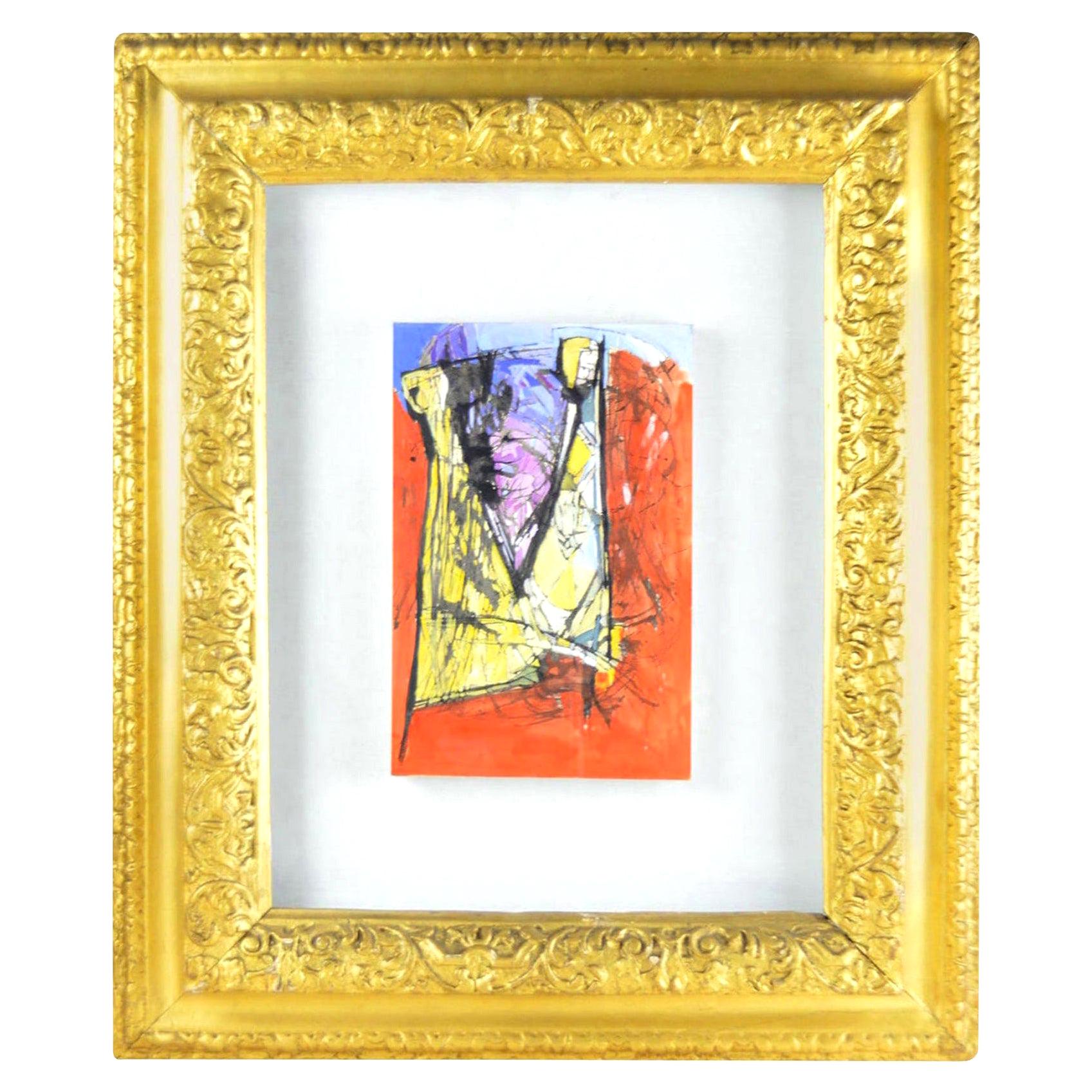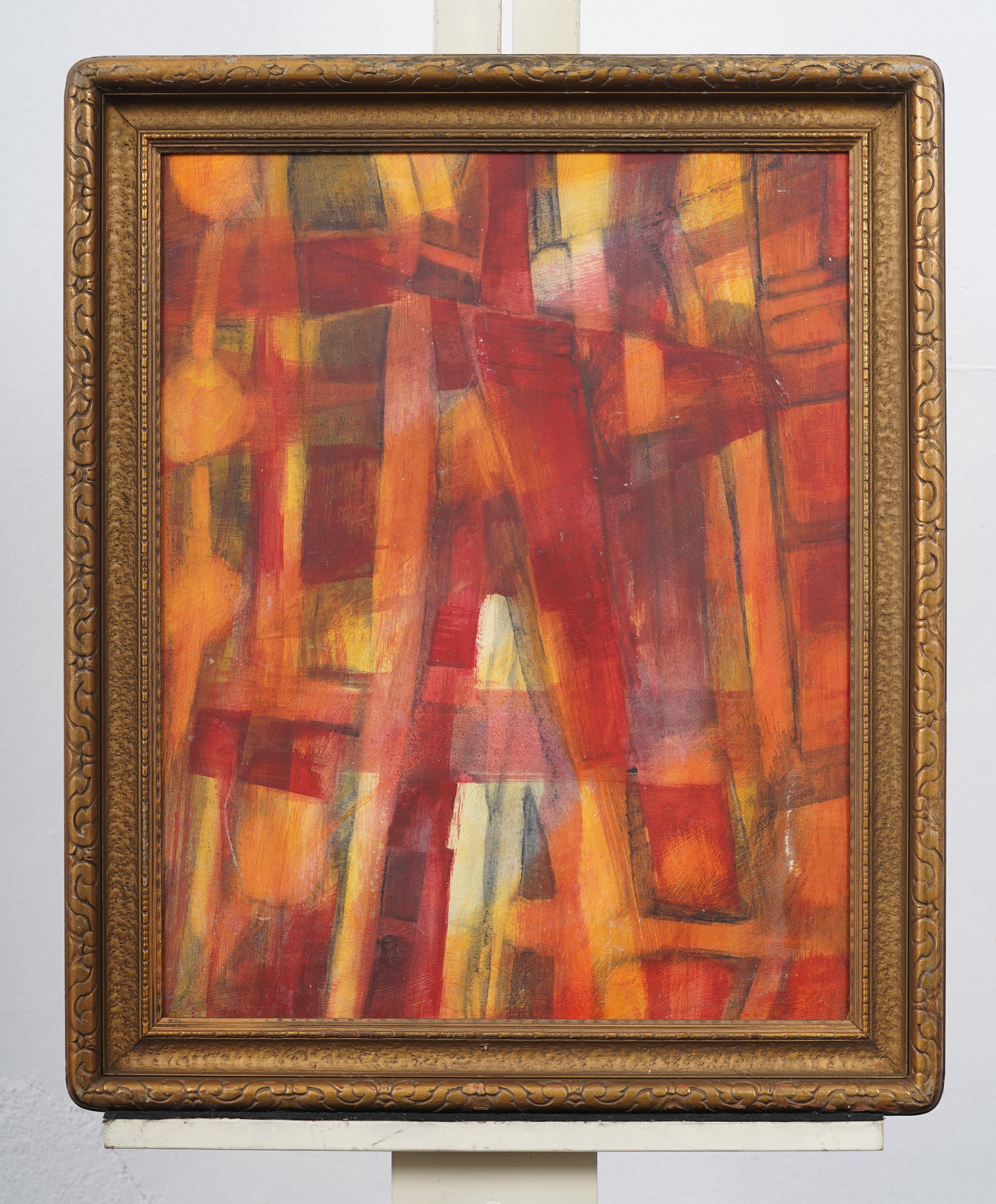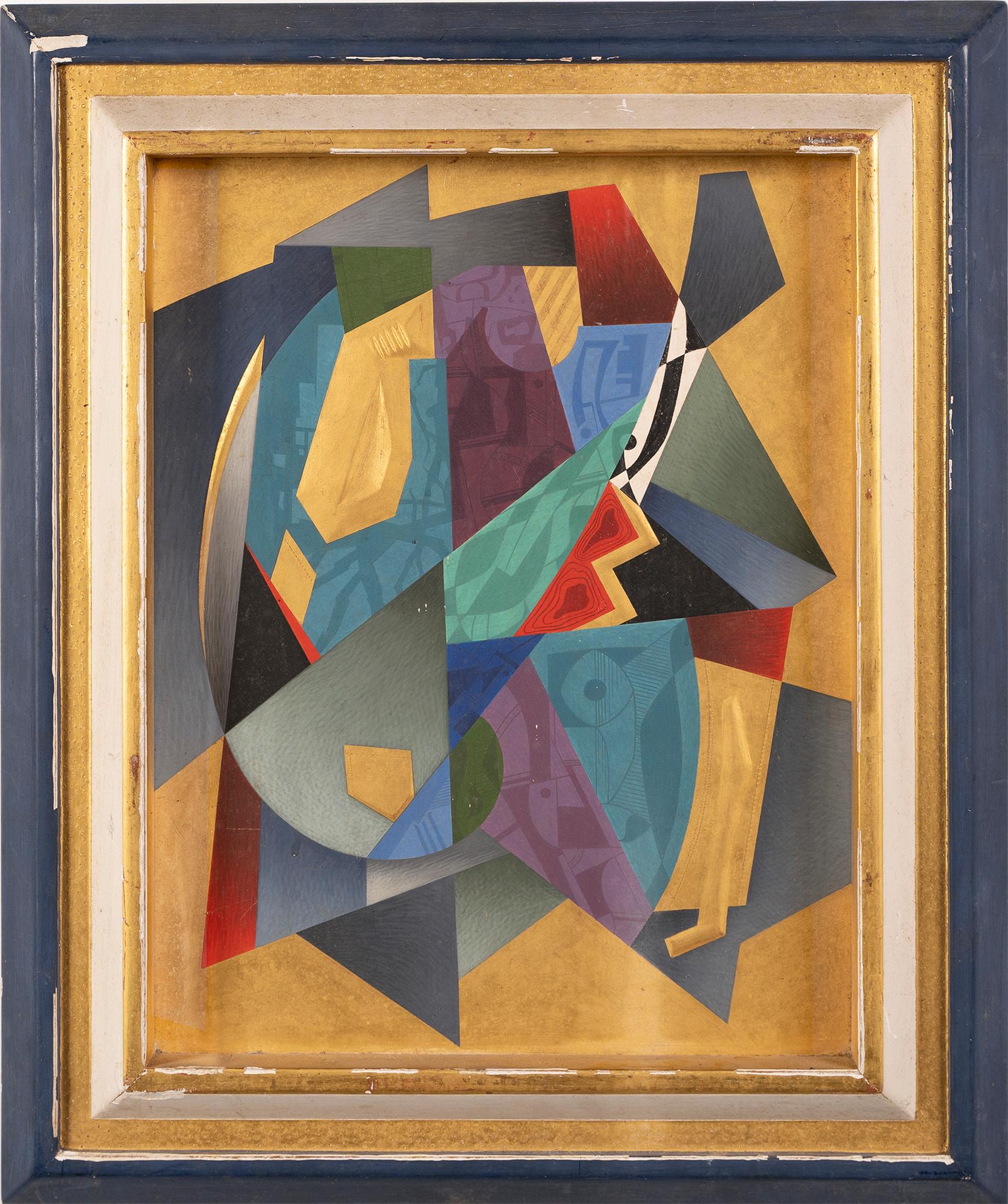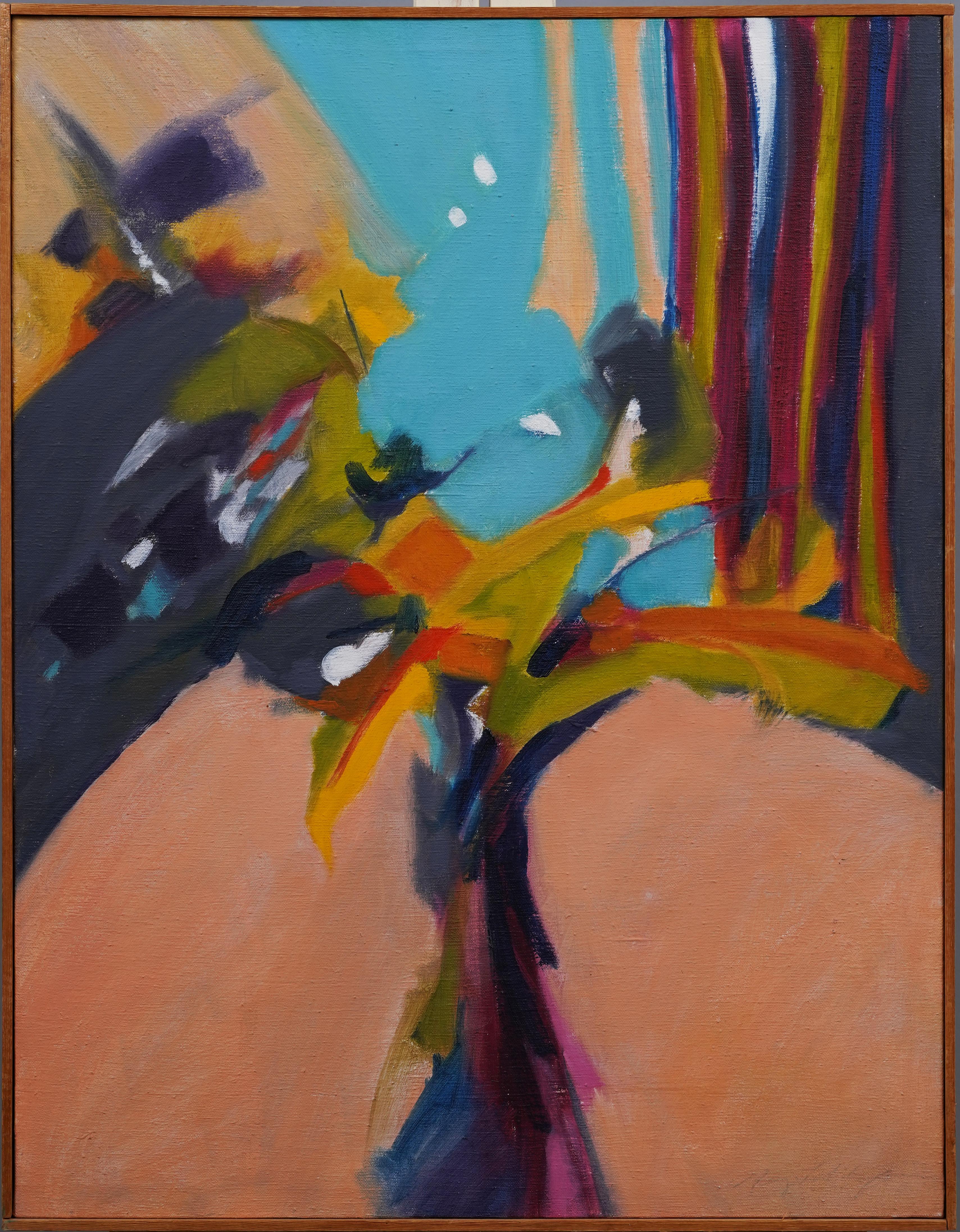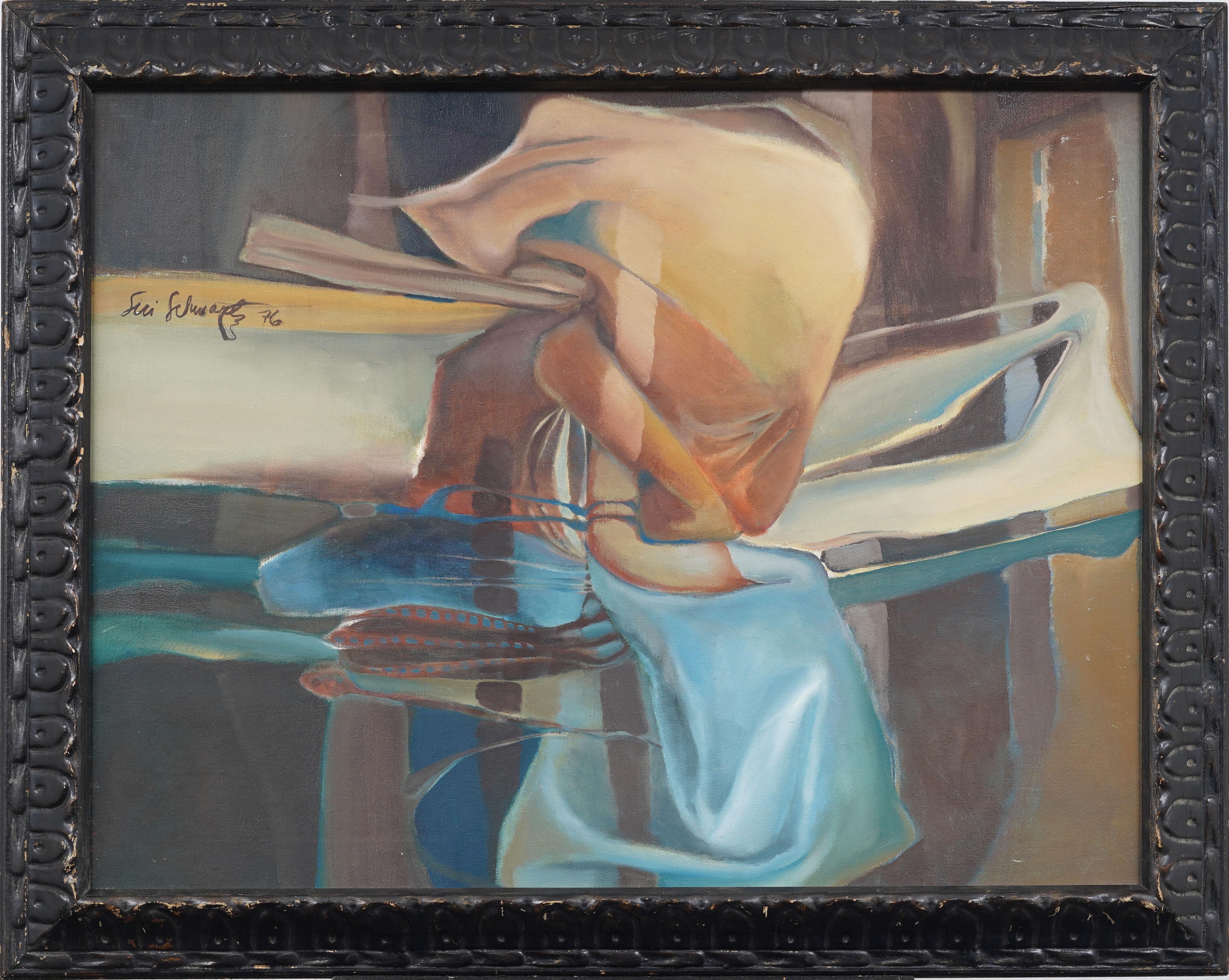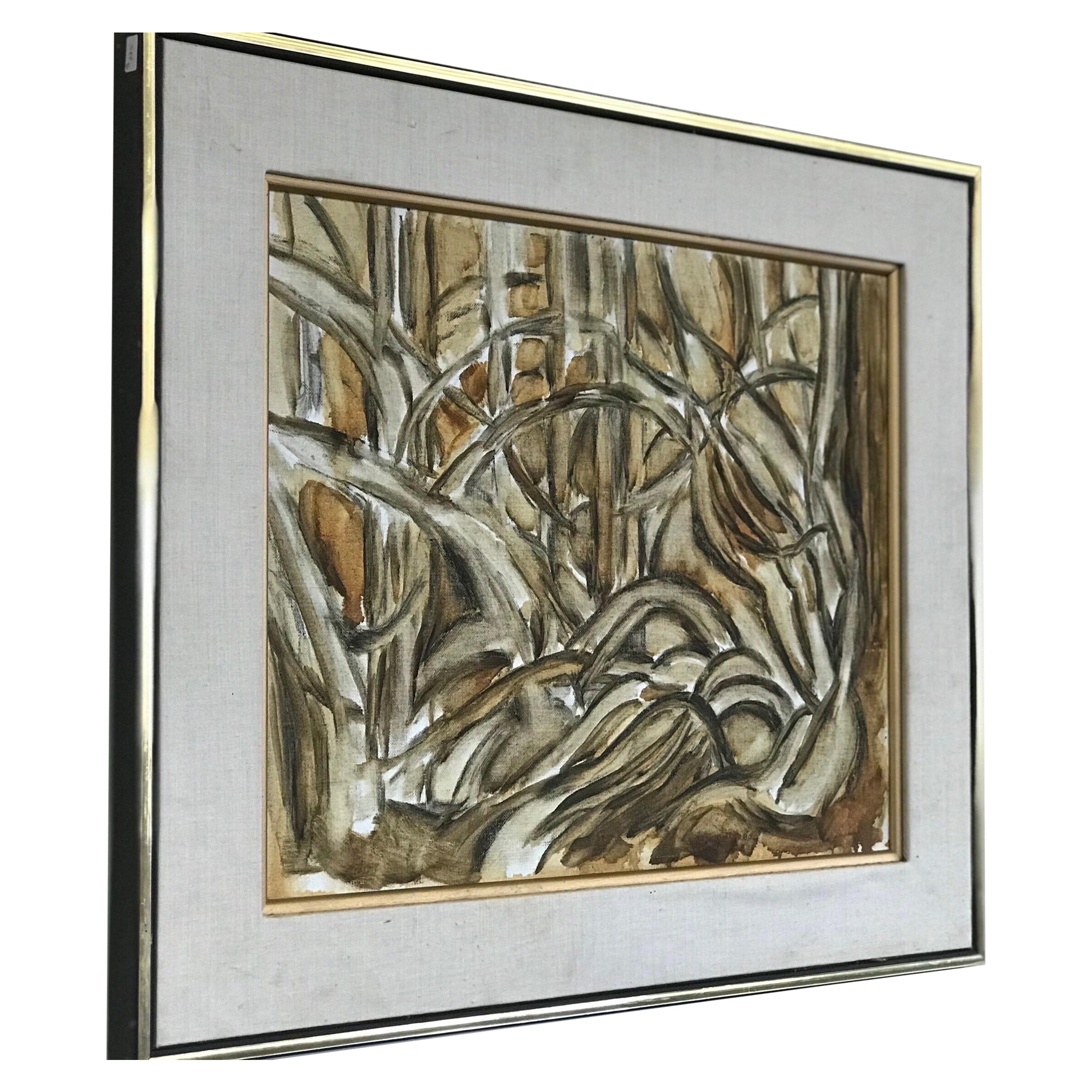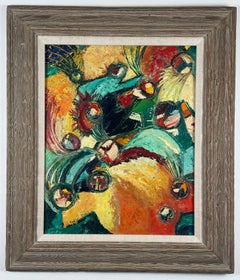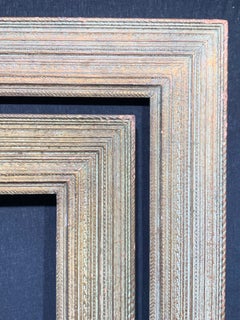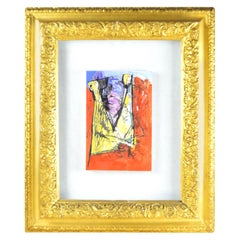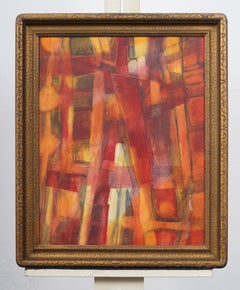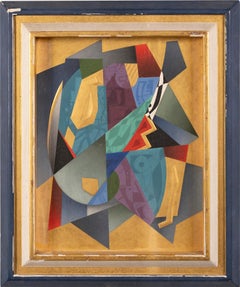Items Similar to Newcomb Macklin antique carved custom gilt mirror/ picture frame
Want more images or videos?
Request additional images or videos from the seller
1 of 16
UnknownNewcomb Macklin antique carved custom gilt mirror/ picture frameca. 1950
ca. 1950
$2,000
£1,540.57
€1,759.15
CA$2,853.45
A$3,122.61
CHF 1,637.67
MX$37,321.80
NOK 20,667.24
SEK 19,280.04
DKK 13,137.60
About the Item
Abstract painting, ca. 1970s measures 25 x 30 inches. Oil on canvas, unsigned.
Stunning modernist custom carved picture frame by Newcomb Macklin. ca. 1950 production. Long, elegant and rhythmic lines decorate resolved corners. Opaque wash over gold leaf. Original surface finish, no subsequent modification or conservation. Some minor loss to surface as depicted in detail photos. Macklin label affixed en verso.
sight: 24 5/8 x 29 1/2 inches
rabbet: 25 1/4 x 30 1/8 inches
overall: 29 5/8 x 34 5/8 inches
depth: 2 3/8 inches
Price of frame with or without painting is the same.
- Creation Year:ca. 1950
- Dimensions:Height: 29.63 in (75.27 cm)Width: 34.63 in (87.97 cm)Depth: 2.38 in (6.05 cm)
- Medium:
- Movement & Style:
- Period:
- Condition:
- Gallery Location:Wilton Manors, FL
- Reference Number:1stDibs: LU24527248422
About the Seller
4.9
Platinum Seller
Premium sellers with a 4.7+ rating and 24-hour response times
Established in 2007
1stDibs seller since 2015
436 sales on 1stDibs
Typical response time: 4 hours
- ShippingRetrieving quote...Shipping from: Wilton Manors, FL
- Return Policy
More From This Seller
View AllUntitled (Abstract Expressionist Painting)
By Bertha Davis
Located in Wilton Manors, FL
Bertha G. Davis (1911-1997)
Untitled, ca. 1960's
Oil on cradled masonite panel.
16 x 20 inches; 24 x 28 inches framed.
Signed lower left. Artist estate stamp on verso.
Vintage custom wormy chestnut frame.
A painter of cityscapes, landscapes, and abstracts in Texas, Bertha G Davis was primarily a self-taught artist whose style was influenced by her early life experiences in pre-World War II Lithuania and later Mexico. Her style is expressionistic*, relying on color to denote her profound feelings. She works primarily in watercolor and acrylic with some mixed media*.
She is the daughter of Abraham and Dvora Germaize of Vilna, Lithuania and grew up in Jewish ghettos in Vilna, Alita, and Kovno. Davis was influenced by her father who was a decorative wood-worker and carpenter in Lithuania. The family of five daughters and a son escaped to Mexico City in the late 1920’s because of Jewish oppression. The images and emotions she experienced had no outlet.
She was known as a beauty, and at age 17 was named Jewish Miss Mexico, barely able to speak Spanish having just emigrated from Eastern Europe. Irving Davis, a merchant from Texas who had also come from Eastern Europe via Cuba, saw her at this event where she was crowned Jewish Miss Mexico, and three days later asked for her hand in marriage. They moved to a small town in Texas, raising a family.
Her daughter, Sylvia, was born when Davis was 20 and they were inseparable. As Sylvia became an actress, painter, and sculptor, Davis was amazed at the capacity for creativity. Davis didn’t begin her own artistic journey until she was 47, when her daughter Sylvia Caplan encouraged her to try. She was inspired by this daughter who gave her a drugstore palette of watercolors, paper and brushes and told her to “just try.” Davis did not put down her palette and brushes until her death in 1997.
Bertha G Davis was primarily self-taught but maintained a style oriented toward color and texture that reflected her strong feelings. Most of her early work was done while she lived in McAllen, Texas where she was known for her contribution to art and showed her work and the work of other artists at the Bertha Davis Gallery.
She studied with Stewart Van Orden, at Pan American College in 1960-61; and was a student at the Art Institute San Miguel Allende, Mexico, 1965. She was also a student of Harold Phenix...
Category
Mid-20th Century Abstract Expressionist Abstract Paintings
Materials
Masonite, Oil
$975 Sale Price
35% Off
Untitled (abstract expressionist mid-century modern painting)
By Joseph Fiore
Located in Wilton Manors, FL
Joseph Fiore (1928-2005) Untitled, ca. 1955. Oil on canvas, 18 x 24 inches.
Measuring 24 x 30 inches in custom modernist frame. Signed lower left. Excellent condition.
Joseph Albe...
Category
Mid-20th Century Abstract Expressionist Abstract Paintings
Materials
Canvas, Oil
$3,000 Sale Price
25% Off
Stanford White Newcomb-Macklin picture frame pair
By Stanford White
Located in Wilton Manors, FL
PERIOD FRAMES c. 1915 American painting frame pair, (earlier Stanford White design), Newcomb-Macklin, New York makers, gold leaf, gray bole, gesso, on c...
Category
Early 20th Century Aesthetic Movement More Art
Materials
Gold Leaf
$1,800 Sale Price
70% Off
Untitled (Abstract Expressionist)
By Murray Hantman
Located in Wilton Manors, FL
Murray Hantman (1904-1999). Untitled, ca. 1950-55. Oil on canvas measures 20 x 26 inches, 26 x 32 inches in silver leaf vintage frame.. Signed lower right. Excellent condition with ...
Category
Mid-20th Century Abstract Expressionist Abstract Paintings
Materials
Canvas, Oil
$3,000 Sale Price
25% Off
Untitled (Abstract Expressionist Painting)
By Jesse Redwin Bardin
Located in Wilton Manors, FL
Jesse Redwin Bardin (1923-1997). Untitled, ca. 1960.
Oil on canvas, 18 x 31 inches; 21.5 x 36.5 inches framed. Signed lower right.
Provenance: Private collection, Philadelphia; F...
Category
Mid-20th Century Abstract Expressionist Abstract Paintings
Materials
Canvas, Oil
Untitled Abstract Expressionist composition
By Eve Peri
Located in Wilton Manors, FL
Beautiful ca. 1955 oil painting by American artist, Eve Peri. Oil on illustration board, panel measures 10 x 15 inches; 15.75 x 20.75 inches framed. Signed lower left. Excellent condition.
Vintage...
Category
Mid-20th Century Abstract Abstract Paintings
Materials
Oil, Illustration Board
$975 Sale Price
35% Off
You May Also Like
Midcentury Figural Abstract Painting In Antique Gilt Frame
By Lynn Chadwick
Located in St Annes, Lancashire
Wonderful figural abstract painting.
Artist unknown.
In the style of the very fashionable artist Lynn Chadwick
Lovely bright colors.
Gouache on ca...
Category
Vintage 1950s English Mid-Century Modern Paintings
Materials
Paper
$500 Sale Price
60% Off
Antique American Abstract Expressionist Framed Original Oil Painting
Located in Buffalo, NY
Antique American abstract oil painting. Oil on board. Framed. In excellent original condition. Handsomely framed in a giltwood molding. Excellent condition, ready to hang and en...
Category
1950s Abstract Expressionist Abstract Paintings
Materials
Oil, Board
$700 Sale Price
20% Off
Antique American School 1930s NYC Surrealist Abstract Gold Gilt Oil Painting
Located in Buffalo, NY
Antique American school modernist mixed media painting. Oil on board with gold leaf assemblage, circa 1930. Unsigned. Image size, 13L x 17H. Housed in a period wood frame most li...
Category
1930s Abstract Abstract Paintings
Materials
Canvas, Oil
$15,800 Sale Price
20% Off
Antique American Framed Original Vintage Abstract Expressionist Oil Painting
Located in Buffalo, NY
Antique American abstract expressionist painting. OIl on canvas. Framed. Finely painted with wonderful color palette.
Category
1970s Abstract Abstract Paintings
Materials
Canvas, Oil
$636 Sale Price
20% Off
Vintage American Modernist Abstract Expressionist Framed Signed '76 Oil Painting
Located in Buffalo, NY
Vintage American modernist abstract expressionist oil painting. Oil on canvas. Framed. Signed. Measuring: 29 by 37 inches overall, and 24 by 32 painting alone.. In excellent origi...
Category
1970s Abstract Expressionist Abstract Paintings
Materials
Canvas, Oil
Vintage Mid-Century Modern Oil Painting Golden Tones Abstract Primitive Framed
Located in Seattle, WA
Vintage Mid-Century Modern oil painting golden tones abstract Primitive framed
Dimensions. Overall 26 1/2 W; 22 1/2 H; Actual Art 19 1/2 W; 15 1/2 H.
Category
Vintage 1970s Mid-Century Modern Paintings
Materials
Paint
$280 Sale Price
20% Off
More Ways To Browse
20th Century Gilt Carved Frame
Carved Wood Painting
Gilt Framed Art
Gilt Framed Vintage Paintings
Antique Mirror With Oil Painting
Vintage Gilt Picture Frames
Gilt Frame American
Abstract Painting Gilt Frame
Newcomb Mirror
Rene A Perez
Richard Elliot Poole
Rick Arnitz
Righi Ricco
Rita Guile
Rj Raizk
Robert Boreman
Robert E Wells
Robert Greene
